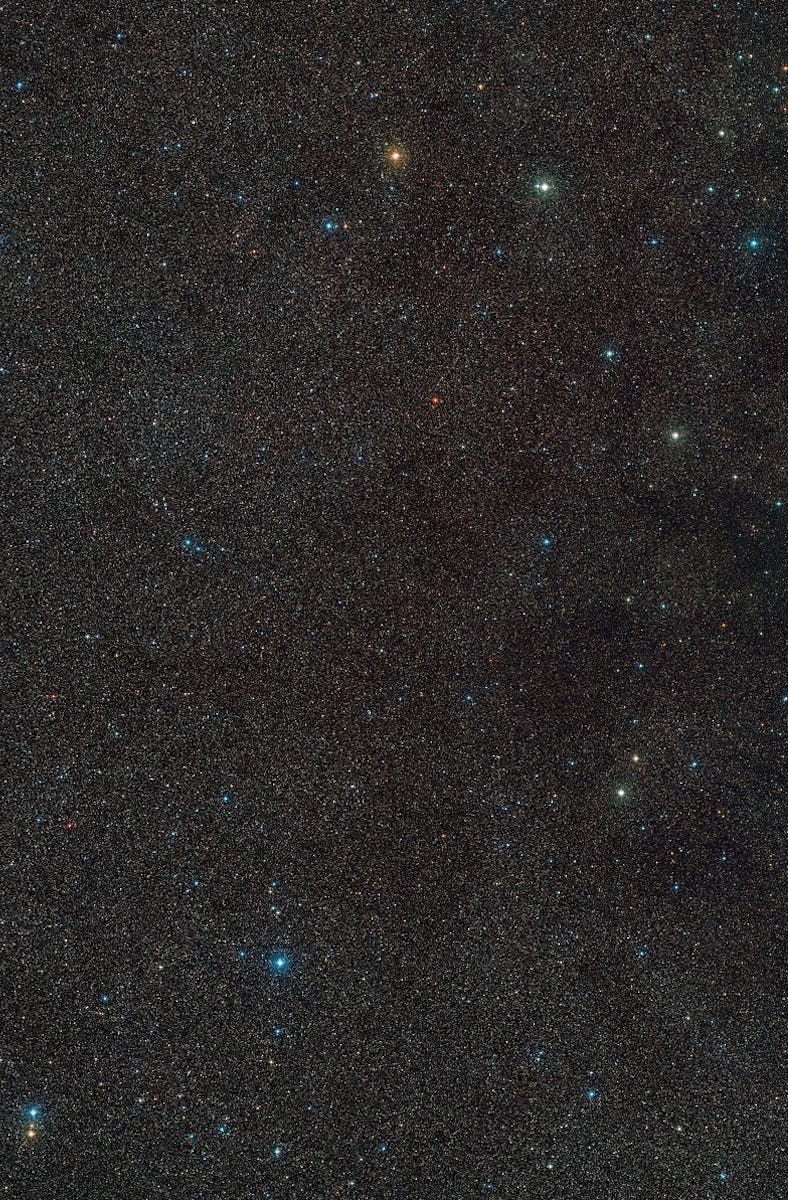Look! A Black Hole 33 Times More Massive Than Our Sun Was Hiding In Plain Sight
Astronomers just discovered the largest stellar black hole in our galaxy. It was forged by a dead star.

A black hole lurking 2,000 light-years away in the constellation Aquila is now the largest-known object of its kind, a research team announced on Tuesday.
This black hole, called BH3, is about 33 times more massive than the Sun. It’s also dormant, so there’s no glowing gas from an accretion disk of captured material to give away its presence. After it kept a low profile for so long, astronomers uncovered this extreme relic from a star that died. (A stellar black hole forms when a star dies.) BH3 is now the most massive stellar black hole known in the Milky Way. It’s also the second largest black hole in our galaxy; first place goes to the behemoth Sagittarius A* whose portrait was captured just two years ago.
BH3 is a nearby example of the sorts of black holes capable of gravitational waves. Distant galaxies were home to the black holes that careened into one another with enough power to produce the ripples in space-time that scientists first detected in 2015. These black holes, at no more than 20 solar masses, pale in comparison to BH3’s size.
How was it discovered?
Black hole science took a fresh new step when Europe’s Gaia spacecraft, which is scanning billions of celestial objects to make the largest 3D map of the Milky Way galaxy, detected a star with a strange wobble. This teetering is a sign that an object is tugging on another with its gravity. Gaia has already discovered more than 160,000 binary star systems through these wobbles, Pasquale Panuzzo, an astronomer at the Observatoire de Paris in France and Gaia collaborator, tells Inverse via email.
Most binary systems are composed of two stars. But not this one. The invisible partner of the wobbling star was a black hole, which astronomers discovered by using ground-based observatories located high up in Chile’s Atacama Desert. Telescopic instruments like the Ultraviolet and Visual Echelle Spectrograph (UVES) instrument on the European Southern Observatory (ESO) Very Large Telescope also confirmed that it far outranks the now second-most massive stellar black hole in the Milky Way, Cygnus X-1, by 12 solar masses.
An illustration depicts three Milky Way black holes by size.
What’s the perfect recipe for a black hole?
As the team pieced together more information, they began to create a picture of what happened in this binary system.
Once upon a time, one small and one large star lived together in space, as many stars do. But the more massive star had a fatal flaw and this caused the bigger star to succumb to a dramatic death, and produce a hefty stellar black hole in its wake. It turns out that the more massive star is metal-poor, abundant in hydrogen and helium, but with few traces of heavier elements like iron or oxygen. Coupled with being 40 to 50 times more massive than the Sun, the bigger star was destined to become a high-mass stellar black hole.
“These so-called metal-poor stars are thought to lose less mass over their lifetimes and hence have more material left over to produce high-mass black holes after their death,” ESO officials wrote in their announcement.
The smaller star hasn’t collapsed yet, owing to being just 76 percent of the mass of the Sun, Panuzzo says. This low-mass star could outlive its former companion by 10 billion years. They aren’t joined in death, by any stretch. But importantly for scientists, they were joined during birth. Binary stars are usually born from the same material. Data indicates the low-mass star is metal-poor, a major indication that the black hole was too, and thus created by the perfect high-mass black hole recipe.
BM3 doesn’t pose a danger to Earth, Panuzzo says. “2,000 light years is small on the scale of our galaxy, but it is still a huge distance.”
A new black hole that isn’t dangerous to us, but whose proximity teaches a lot about black hole evolution and gravitational waves? That’s a space win-win.